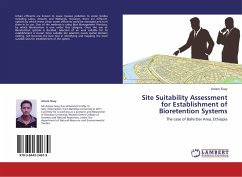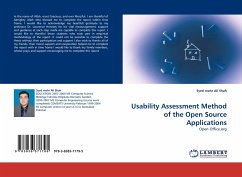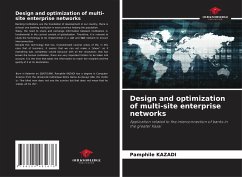
Site Suitability Assessment for Establishment of Bioretention Systems
The case of BahirDar Area, Ethiopia
Versandkostenfrei!
Versandfertig in 6-10 Tagen
32,99 €
inkl. MwSt.

PAYBACK Punkte
16 °P sammeln!
Urban effluents are known to cause massive pollution to water bodies including Lakes, Streams and Wetlands. However, there are different options by which these urban water effluents could be managed and turn them in to use. One of the methods is using Best Management Practices, by which Bioretention is one under this category. Once the use of Bioretention systems is decided, selection of an area suitable for its establishment is crucial. Since suitable site selection needs spatial decision making, GIS becomes the best tool in identifying and mapping the most suitable sites for establishment of...
Urban effluents are known to cause massive pollution to water bodies including Lakes, Streams and Wetlands. However, there are different options by which these urban water effluents could be managed and turn them in to use. One of the methods is using Best Management Practices, by which Bioretention is one under this category. Once the use of Bioretention systems is decided, selection of an area suitable for its establishment is crucial. Since suitable site selection needs spatial decision making, GIS becomes the best tool in identifying and mapping the most suitable sites for establishment of the system.












